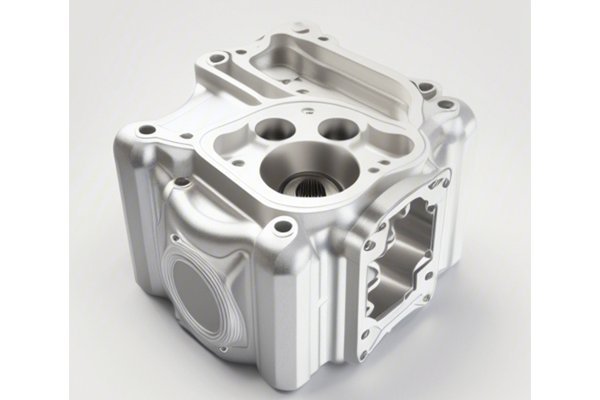: An Interesting Statistic
Did you know that the global CNC machining market is projected to reach approximately $100 billion by 2025? This staggering growth rate speaks volumes about the crucial role CNC (Computer Numerical Control) machining plays in modern manufacturing, particularly when it comes to precision tools and parts. In today’s competitive landscape, manufacturers are increasingly turning to CNC machining to achieve the high accuracy and efficiency needed to meet customer demands.
In this extensive blog post, we will explore the intricacies of CNC machining, delve into its advantages for precision manufacturing, and provide actionable insights on best practices for ensuring quality performance. We’ll also discuss how CNC machining technology is revolutionizing production methods across various industries.
Understanding CNC Machining
What is CNC Machining?
CNC machining is a subtractive manufacturing process that involves using computer-controlled tools to remove material from a solid block, known as a workpiece. The CNC machine reads coded instructions or a G-code, a numerical representation of the desired tool movements, calculations, and dimensions, to precisely cut, mill, turn, or drill materials into various shapes and sizes. CNC machining is utilized for production and prototyping of parts across diverse sectors, including aerospace, automotive, medical devices, and consumer products.
Key Components of CNC Machining
Understanding the fundamental components of a CNC system is essential for appreciating how precision is achieved in manufacturing. Key elements include:
Types of CNC Machining Processes
CNC machining encompasses various techniques tailored to different applications. Some of the most common processes include:
The Importance of Precision in Manufacturing
Precision is paramount in the manufacturing industry. According to a report by the National Institute of Standards and Technology (NIST), even the smallest deviation in measurements can lead to significant distortions in the final product, which can cause malfunctions or failures. This precision is now more achievable than ever with CNC machining, capable of tolerances as tight as ±0.001 inches (or even tighter in specialist operations).
The Advantages of CNC Machining for Precision Tools and Parts
One of the standout benefits of CNC machining is that it achieves exceptional levels of accuracy. The computer-controlled nature of these machines eliminates human error commonly encountered in traditional machining. Repeatability in production is a key asset, ensuring each part manufactured meets exact specifications and can be produced in identical copies without deviation over time.
CNC machines can operate continuously—which means they can run 24/7 with minimal breaks—significantly increasing throughput. Automated machining reduces the time required for setup and retooling, while optimized paths are calculated to minimize idle time.
CNC machining is compatible with a wide range of materials, including metals, plastics, wood, and composite materials. This versatility allows manufacturers to adapt their processes to meet their specific needs, enabling production across multiple industries.

The ability of CNC machining to produce intricate designs and custom geometries makes it ideal for manufacturers focusing on precision tools and parts. This capability also allows for more innovative product designs—particularly relevant in industries such as aerospace and automotive.
While the initial investment in CNC machines can be substantial, the long-term operational savings often make them more cost-effective than traditional machining methods. The reduction in labor costs, improved material waste management, and lower rework rates all contribute to a more favorable bottom line.
CNC machines are typically housed in enclosed areas, which provides a layer of safety for operators. Additionally, because the machine performs the cutting rather than a human, operators are less exposed to hazardous situations associated with manual machining.
Best Practices for Utilizing CNC Machining in Precision Manufacturing
Before moving to production, ensure your part design is optimized for CNC machining. High-resolution CAD models should be rigorously evaluated to prevent issues during machining. Key factors include choosing the right tolerances and ensuring features are manufacturable.
Choose the right material that suits the part’s end-use while also being easy to machine. Explore options for pre-machined components as this can save significant machining time and costs.
Utilizing advanced software to optimize tool paths will enhance machining efficiency while ensuring quality results. This step should encompass the selection of appropriate feed rates and cutting speeds tailored to the machine and material being used.
Incorporate quality control checkpoints at different stages of the manufacturing process. Use calibration tools and inspection methods like CMM (Coordinate Measuring Machine) to verify part accuracy and compliance with specified tolerances.
Keeping your machines in peak operating condition is essential to avoid downtimes that can sabotage productivity. Implement a routine maintenance plan that includes checks for lubrication, calibration, and mechanical wear.
Case Studies: Successful Implementations of CNC Machining
A leading aerospace manufacturer turned to CNC machining to create turbine engine components with intricate geometries and tight tolerances. By utilizing 5-axis CNC milling, they reduced lead times by 25% while ensuring parts complied with stringent aviation standards.
A medical device company needed to produce precision implant components that demand high-quality standards. They adopted CNC turning and milling, achieving the necessary precision and quality—ultimately resulting in increased regulatory compliance and customer satisfaction.
An automotive manufacturer implemented CNC machining for producing camshaft and crankshaft components. By doing so, they shortened their production cycle, boosted reliability, and enhanced performance metrics.
: The Future of CNC Machining in Precision Manufacturing
CNC machining is indeed transforming the landscape of precision engineering—and the growing demand for its application in tools and parts will continue to rise. By embracing these advanced manufacturing technologies, industries can enhance productivity, reduce errors, and stay competitive in a fast-evolving marketplace.
As we summarize, the key techniques covered in this blog highlight the significance of accuracy, efficiency, and adaptability associated with CNC machining. Manufacturing entities must contemplate these factors while deciding how to implement CNC machining into their processes.
In an age where precision dictates success, understanding and embracing CNC machining may become critical not just for growth but for survival in the manufacturing sector. The decisions made today in adopting this technology could pave the way for a more competitive and innovative future.
Moreover, as you explore CNC machining for your future projects, remain inquisitive and updated on emerging technologies in this field. Not only do they hold immense potential for excellence in precision manufacturing, but they also herald a brighter, more technologically advanced, and productive future.






